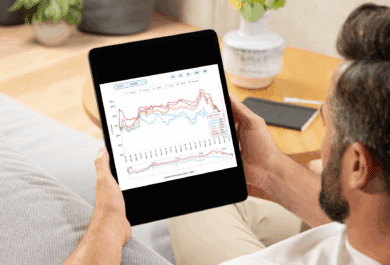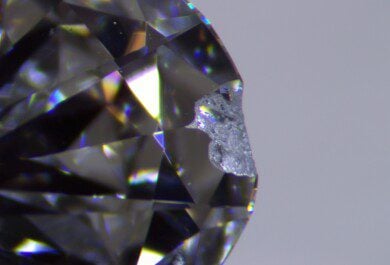How to know what you are doing
Recently I have been seeing a LOT of commercials on the TV about turning your old gold jewelry into a mound of money.
“Send us your address and we will send you a shipping envelope and soon after we will send you money.”
It seems that every few weeks I see a full page ad, or even a two page spread advertising to come to Hotel and turn your unwanted treasures into cash, HIGHEST PRICES PAID. Have you ever wondered if it would be worth it? It might be, but you will not typically get your best yield from either of the above buyers. Let’s take a look at what is happening.
Gold
When we are talking about gold jewelry, it is important to know that we are not talking about pure gold. Pure gold is expressed as 24 karat or 24kt, meaning that all parts of the gold are gold. Pure gold, while being a rich and wonderful color is very soft and is rarely used to create jewelry. Most gold is alloyed with other metals such as silver, nickel and copper to make it harder and also to influence the color of the gold that we see. The amount of alloy used is expressed as parts of 24, so that 18kt means that 18 of 24 parts is gold, or 75% of the material is gold, whereas 14kt means that 14 of 24 parts are gold, or 58.33% of the material is gold.
The lowest amount of gold that can be in an item and still be called gold is 10kt gold in this country. Some countries will go as low as 8kt. 10kt gold is the minimum standard set in the USA because that is the lowest grade where gold becomes the major component with silver typically making up just less than 40% and in yellow gold copper makes up the balance.
It is important to recognize for this discussion, that no matter what the karat of the gold, when a jeweler buys it, he is paying not only for the gold, but for the alloys that are in the gold and the cost of the labor to create and test the gold alloy at the stated karat.
For example: Here is the chart for the metals at the close today.

As you can see, gold closed with a bid of $804.90 per ounce, i.e., what I could sell pure gold for if I had a sufficient quantity to sell a contract worth of it, and an ask of $806.30, which is what I would have to pay to buy a contract worth of it. You can also see that it went down $25 from yesterday’s close and had a high of $810.60 and a low of 790.50. Now, I went to a supplier to see what it would cost me to buy a pennyweight worth of 14kt casting grain. A pennyweight is 1/20th of an ounce. So, a pennyweight of pure gold should cost approximately $40.31 (806.30/20 = $40.31) and a pennyweight of 14kt would cost only $23.51 (40.31 x .58333) if I did not have to pay for the other metals and the labor to mix them. A pennyweight of 14kt white or yellow casting grain costs $28.87. Some of the more exotic mixes such as red or green were at $29.12 per pennyweight (abbreviated as DWT) and palladium white was the highest at $30.47/DWT. Tomorrow it will change, depending on the price of gold. If I was buying gold chain or a cast ring, it would be an even greater difference between the cost of the gold and the cost of the finished product. Of course, this is the jeweler’s cost, you will have to pay even more to buy the jewelry, as the jeweler will have to actually make the product with that casting grain and will also have to set the gems that are used and must make a profit if he/she is to be here the next time you wish to purchase jewelry. We could do the same kind of information about Platinum and Silver, but I think it is not too necessary for what we are trying to do. I can hear you already… “Wink, I want to know about selling.” Well, okay, but I want you to know what goes into the cost of gold when you buy, now we can talk about what you get back when you sell.
Selling
When you want to sell, you will want to know what your metal is worth. You can see the price of gold in many places, I like to use Kitco.com. It is normally about 15 minutes behind real life time, but is usually close enough to have a good idea. Now you need to know the process. When you go to a gold buyer, he is going to look at your gold, see how it is stamped, and then he will probably test it to make sure that it is at least somewhere in the vicinity of what it is supposed to be. It is a sad fact that in this country (and others) there are people who will often lie about what they have, both on the vending side, and on the public side, so a gold buyer needs to be careful that they are not buying gold plate, or metal that simply looks like gold and is not. If you take in a nice heavy chain, do not be too surprised if the buyer wants to gouge it with a big file and put some acid on it to watch the reaction. If it bubbles and turns green, you will not get an offer, and your chain will look horrible. My friend in the refining business tells me that on the coasts, gold marked 14kt tends to run in the 54.5% – 55.5% pure instead of the 58.33% that it is supposed to be, and that in the heartland it does in fact tend to be closer to the 58.33% that it is supposed to be. At this point there are a couple of ways things can go. With most hotel buyers they are offering cash on the spot for what they think your gold is, and they will start out with a low offer, often in the 35 – 40% of melt value.
If you have a large quantity of gold, and are a good negotiator you can get it higher, although since the hotel buyers have spent a fortune on advertising and renting a hotel room, you can count on them not giving as good an offer as you can probably get from a local buyer who has an established business in your area. The same goes for the TV buyers, their offers are often notoriously low. One was tested by an associate of mine and found to be in the 15% of melt range, others have been tested and found to be paying as high as 50% of melt. So, for your ounce of pure gold, which you could sell for $804.90 if you had enough of it to sell a contract of, you might be offered as low as $120 .73 to as much as $402.45 depending on who you are dealing with and how good a negotiator you are. While this seems unfair, and at the lower levels of offers it probably is, there are mitigating factors to consider. The buyer will have to send the material to a refiner, incurring incredible costs for postage and insurance. The hotel buyers have spent a LOT of money on advertising and on security and on personnel to work the show, as well as on travel to get them there.
They will eat the cost on any non gold that snuck through the testing, and some fabricators are getting very good at making things look like gold these days. Then there will be the costs associated with the smelting process. If they have stones in the gold that are worth saving they must either pay someone to remove them by hand, or if they are diamonds or some of the more durable gemstones, they may remove them chemically by turning the gold into a solution and catching the gems at the bottom of the vat. This has a lower cost than removing the gems by hand, but is still expensive, and the fee is charged per kilo. Then there are the smelting fees, the fire assay fees to see what is actually in the melt versus what you thought was in the melt, and then the buyer gets paid from 92 – 98% of the melt value from what is actually obtained, depending on how large the buyer’s shipment was and how good a relationship the buyer has with the refiner. Most buyers with the quantities that they are shipping are going to be getting 98% return.
Oh, and did I mention that when prices raise or fall dramatically that they may make more or less money, or even loose money? The good ones will therefore hedge their bets in the market to protect against these fluctuations after they have bought, but this also adds expenses to their business. Still, they make a nice profit, and you get less than what you could if you went another route.
What is the other way to go?
If you have a sufficient quantity of old gold, say you just received an inheritance full of old and worn out pieces, or you have been an avid buyer for many years and now you would like to “scrap out” some of the pieces that you will never wear, you can find someone to work with you on a different basis. What you will receive will vary from where you live, and some areas are more competitive than others. Here is what I recommend if you have a larger batch. First, talk to the various buyers who have established buying businesses in your area. Tell them approximately what you have, and ask them what they will pay on a percentage of the actual melt received. Then, when you have chosen the buyer who you feel most comfortable with, you will go to him and spend some time, while he sorts and weighs your treasure. He will then tell you what you might have in terms of weight and also which items need to have the gems salvaged and which are not worth the expense of removing. (This often happens with poor quality melee or low quality gems that are worth less than one or two dollars each, the labor to remove them is more than the value of the “gems”.) These items are then sent to the refiner for melting and a fire assay to determine the estimated yield of the shipment. You then have the choice to lock in the value or wait until the actual refining is finished and even then you may leave your gold with the refiner until you are ready to settle the transaction if you feel any downturn in price is a short term aberration. Once you lock in the price it is sold and the refiner will send to your buyer the agreed upon amount and he will return to you the percentage that you have agreed upon. Whether you get that percentage before or after all of the expenses will depend on several factors. If you have a large lot you will be getting a higher percentage than if you have only a few ounces. If your lot is large enough the buyer may agree to pay the expenses out of his share of the lot. Also if you have negotiated a very high percentage, then you can expect to pay all of the shipping and insurance charges and other refining expenses that were mentioned above. I did some checking around my area and found that local buyers will pay as low as 40 – 45% for small lots, and as high as 55-65%, proving that it definitely pays to check around before walking into someone’s office. The gentleman that I found to be paying 65% when you walk in the door for your expected return, who paid with a check on the spot, would go as high as 80% for a lot consisting of more than two pounds. I have heard that in some competitive areas prices as high as 90% are paid, but I would be very careful in this case, wanting to be absolutely sure that the buyer was either writing a check on the spot, or strong enough to still be there on settlement day if selling at actual value of the refined metal. At those margins there is absolutely no room for error and many of those merchants have tended to come and go fairly rapidly when they find out the hard way that there are expenses to running a business.
Platinum and Silver
The procedures for Platinum and Silver are very similar to gold, but the percentages paid are very different. Depending on the volume of the metal sent the buyer may receive only 80 – 90% of the melt value for platinum, and 85 – 87% for silver. The assay fees for Platinum are substantially higher than for gold or silver. Plus it is a much more difficult and expensive metal to work with, which is a big part of why the buyers are paid less for it. You will need to do the same sort of homework with buyers for platinum and silver that you did for gold, usually you will find that the strongest buyer in your area for gold will also be the stronger buyer for platinum or silver, but not always. It is your metal, you must do your homework.
Conclusion
Armed with a little knowledge of how the market actually works, you are now in a much better position to negotiate a better price for your scrap metals. You have now learned that the television buyers and the hotel buyers usually pay considerably less than you can get with a local buyer. Also, hopefully, you will have learned that it takes negotiation and asking questions to get the highest pricing for your gold, and why you get back so little compared to what you paid. I have seen so many people who sell their gold and platinum for too little because they did not know these things. It is my hope that this will not be the case with my friends here on Pricescope.
Wink Jones
Discuss here https://www.pricescope.com/community/threads/selling-gold-and-platinum-jewelry-for-the-melt-value.95409/












